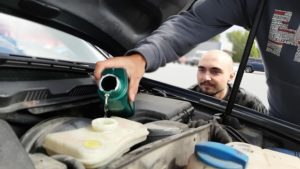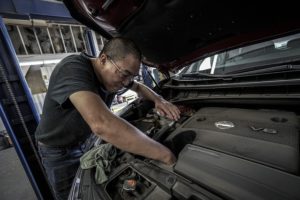“Drivability” is a word often used to describe how a car feels, especially when customers are looking to purchase a new vehicle. But what does the word actually mean? While it’s often used as a buzzword by car salespeople, there is some truth to the term that mechanics and other vehicle specialists use. It’s a term that describes the ability of your car to drive, and there are many variables to consider. Today, we’re going to highlight some of the major indicators of drivability, so you can go armed with new knowledge when looking to purchase a new vehicle or have work done to your current one.
1. What happens when the key is turned in the ignition?
The engine’s ability to turn over when the key is turned in the ignition is a measurement of the starter motor’s health. The auxiliary functions of the vehicle, such as air conditioning, heating, and radio should all start when the engine turns over. If this doesn’t happen, it could indicate a dead battery, faulty starter motor, or a seized engine—all of which indicate poor drivability.
2. Does the vehicle stall or shudder once it’s started?
Once the engine starts, you expect the vehicle to run smoothly. You should look out for any shuddering, stuttering, or unexpected stalling that indicates that the engine could have major issues that affect its drivability. Mechanics will be able to determine what is causing these issues and then recommend the best course of action to set it right.
3. Does the vehicle stop properly?
If a vehicle doesn’t come to a stop as well as it should, or the brakes shudder, squeak, or grind when pressed, the vehicle could need new brake discs or have a problem with the hydraulic liquid. Poorly working brakes are a significant safety risk, and this greatly reduces its drivability.

4. How does the vehicle feel when gaining speed?
A vehicle’s engine is put under strain while it’s accelerating, especially at speeds of over 50mph. If a car shudders, loses control or struggles to accelerate to higher speeds, it could be an issue with the wheel alignment, suspension, or tire tread.
5. Does the vehicle run better when warm or cold?
Vehicles that don’t run properly in the cold weather likely have an issue with the fuel injection. However, some cars may not start in hot weather due to problems with an overheated relay system. All of these issues should be checked before purchasing any vehicle.
6. Does the vehicle lose power when driving up long hills?
Hills are a significant drain on engine power. Any engine that is clogged or has a problem with the airflow may not perform as well when driving up long hills. This is another measure of drivability as a car with a good level of drivability shouldn’t lose power when driving uphill.
“Drivability” is often used by car salespeople incorrectly, but it actually has a true definition that mechanics and other specialists use. If you’re looking to buy a new car or want maintenance done on your current vehicle to improve drivability, you’ll now go armed with the knowledge of what this term actually means. If you’d like to have an expert to look over your vehicle to check its drivability, you should look no further than JD’s Auto Repair. Our qualified experts will look over your vehicle and give you a full analysis so you can know exactly what you’re purchasing.
Call us today at (215) 938-9270.




